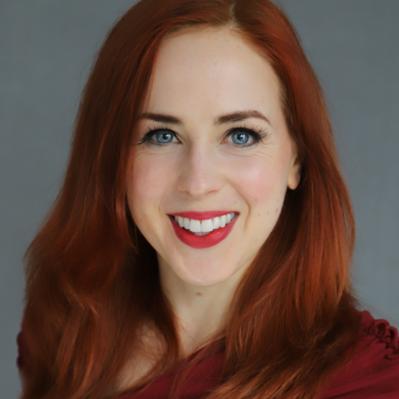Dr. Neha Sangwan recalls the moment she hit burnout rock bottom at age 33:
“It was June 17th, 2004, and I was on my last day of a five day hospital rotation.” As an internal medicine physician, she was working in an understaffed hospital, treating patients coming in from the emergency department or trauma.
“I needed to dictate everything, sign it off to the next person, so I could get some time off. Someone called out sick that day, and I also happened to be carrying what we call the ‘alpha pager,’ which meant air traffic control for all incoming cases. Everything was so busy, it just kept going. I turned to the nurse and I said, ‘Hey, Nina, can you get 40 milli equivalents of IV potassium for the gentleman in 636?’ She looked at me and said, ‘Dr. Sangwan, are you okay?’ I remember that moment surprising me because it was the first indication I might not be. When I asked her why, she said, ‘That's the fourth time in under five minutes that you've asked me that same question, and I've answered you every time.’”
Dr. Neha Sangwan is a physician, engineer, CEO, communications specialist, and author whose own ... [+]
While burnout wasn’t something that was spoken about or even very well understood at that time, Dr. Sangwan recalled that a psychiatric colleague had helped another doctor through a rough patch several months prior. Expecting to have just a conversation about her situation, maybe get some insight about what to do, she was shocked to leave his office with “a prescription for stress leave—and Prozac.”
“I don't remember much of the ride home,” she says, “which tells me I shouldn't have been driving home. I do remember thinking to myself, ‘I don't know what's wrong with me right now, but I'm pretty sure it's not a Prozac deficiency.’ I had the awareness of complete and utter confusion, almost like someone who's been stunned after a trauma with no real understanding of what was going to be next. So I put the medicine in my top drawer in case I needed it and the psychiatrist asked me to come back weekly and talk to him.”
It was in those sessions that she began to unravel and examine the burnout she was experiencing. What was it? What were the causes? What role did her environment play? What of her other experiences were contributing? Working 36-hour shifts while subsisting on candy and caffeine surely wasn’t helping, she acknowledged. Inspiring her to devote her energy to the study of burnout, this experience ultimately opened up a whole new career path for her.
Fast-forward to today, and Dr. Sangwan is a physician, engineer, CEO, communication specialist, TEDx speaker, and author of multiple books, including the new Powered By Me, which provides solutions to heal from the burnout that comes from making decisions that aren’t aligned with our values.
Burnout doesn't happen overnight. Spotting the signs can help you avoid hitting rock bottom.
Burnout Signs to Watch For
Jenny Blake, podcaster and author of Free Time, Pivot, and Life After College, explains that burnout can show up no matter your occupation. “People-pleasing is a big burnout contributor—doing so much for everyone else, over-functioning, and even over-anticipating needs until you have nothing left. It's important to set your own parameters for how much you will work and how quickly you will respond (if at all). No one else will do that for you, no matter how well-meaning your colleagues and manager might be—or your team, clients, and community if you're self-employed.”
The consequences of burnout can be far-reaching. Blake says, “It leads to a sense of malaise and hopelessness, perhaps even a sense of futility: why do the work at all if you're so miserable doing it?”
Physical health ailments such as headaches, stomach issues, impaired immune system function, fatigue, sleep disturbance, and changes in appetite or eating habits may also occur.
Knowing your unique “tells” when you’re on the path to burnout can help you put the brakes on before it’s too late. Blake shares, “One of my biggest burnout red flags is starting to resent outreach from friends. I see text pings and emails like little arrows firing into my already depleted energy stores, each one feeling like an intrusion. ‘Why is everybody bothering me?!’ or ‘Why does everyone want something from me?!’ tend to be my first reactions out of misplaced frustration, until I pause and reflect, realizing this is overwhelm signaling that what I really need is to take some quiet time and recharge. Everyone can wait.”
Already burning out? Here’s what to do next.
When you realize you’re burning out—or let’s be real, already there—acknowledging what’s contributing can be helpful in figuring out what to do next. Tune in to what you personally need to recharge.
Blake offers, “Sometimes bigger pivots are required, but even just taking a few days off (if you can) will provide a much-needed reset, at least so that you can reflect more objectively on what the biggest friction areas are for you.”
Dr. Sangwan adds that burnout often begins with little breaches in our boundaries, little moments where we say “yes” when we really mean “no,” so building awareness of your values and why they matter to you can help you reinforce those boundaries that protect your spirit and energy. “It’s about knowing what you value and trusting yourself to make decisions based on your top values and in what order you prioritize them.” Going for a massage or taking a bath are nice ways to take care of yourself and relax, but on a deeper level, she says, “ burnout is a wake-up call” to get clear on what matters most to you and make a plan to get and stay in alignment.
